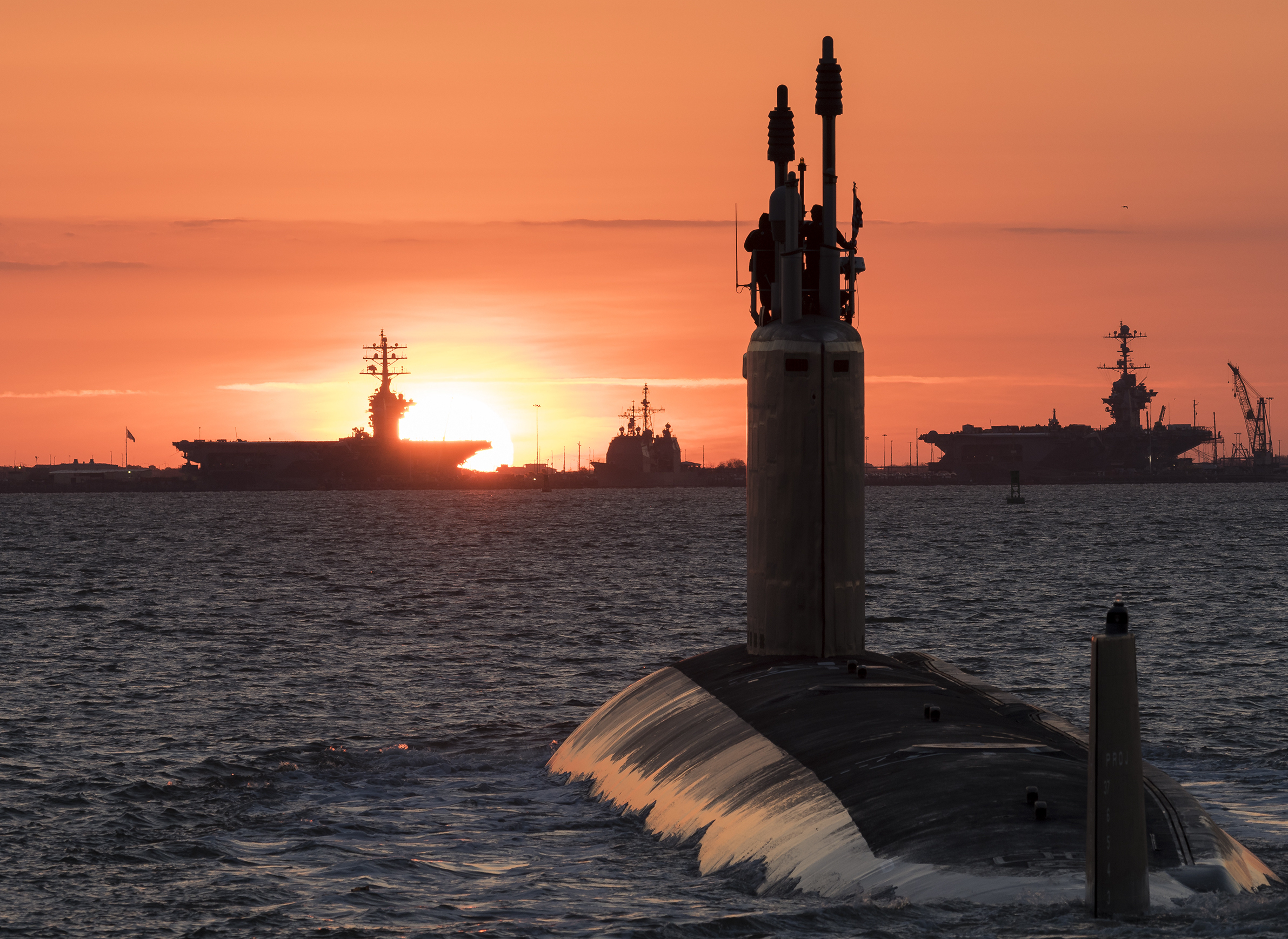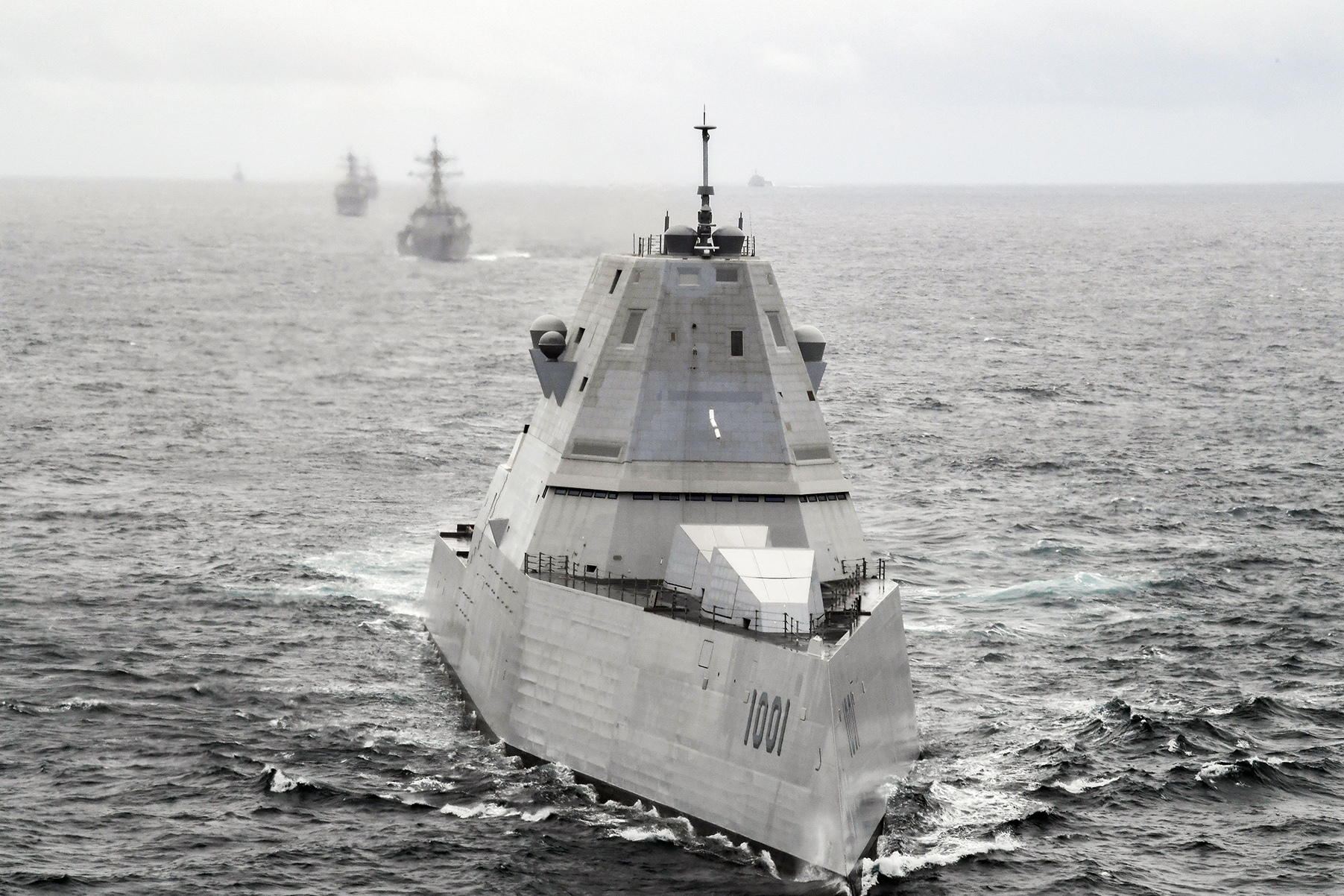
The Navy is seeking nearly $110 million to help research and develop its next-generation destroyer and submarine programs, according to service budget documents.
The Fiscal Year 2022 submission asks for approximately $29.8 million to develop SSN(X) and about $79.7 million for concept development of the DDG(X) – which will succeed the Arleigh Burke-class destroyers.
According to the Navy’s research and development budget justification books, the service expects to start building SSN(X) – its next-generation attack submarine – in the second half of the 2030s. The service will use the FY 2022 research and development funding to help gear up for an analysis of alternatives (AoA) study.
“SSN(X) will continue to define requirement options and refine cost estimates to support a mid to late 2030s construction contract award. Initial efforts in FY 2021 focused on completing the Capabilities Based Assessment (CBA), conducting studies and technology development efforts in preparation for the Analysis of Alternatives (AoA) and beginning an Initial Capabilities Document (ICD). Funds also supported acquisition documentation development; engineering support efforts; and ship design management efforts,” the justification documents read.
“As the SSN(X) program continues to ramp up, FY 2022 efforts will focus on completing the ICD; the commencement of the pre-work for the AoA including the pre-study and CAPE approval; and the continuation of technology development and studies; acquisition documentation development; engineering support efforts; and ship design management efforts. Additionally, SSN(X) will leverage studies and development efforts from the Virginia Class and Columbia Class Submarines.”
Service officials have said the Navy will use the future Block VI Virginia-class boats to help inform the development of SSN(X), USNI News previously reported.
The most recent budget documents – unveiled last week – say the Navy will develop SSN(X) with an eye toward a near-peer threat, which aligns with the Pentagon’s ongoing shift toward preparing for conflict with countries like Russia and China.
The service wants to outfit the future attack sub with more weapons than what is on its predecessor, the Virginia-class boats, and improve both its speed and stealth capabilities.
“SSN(X) will be designed to counter the emerging threat posed by near-peer adversary competition for undersea supremacy. Unlike the VIRGINIA Class Submarine, which was designed for multimission dominance in the littoral, SSN(X) will be designed for greater transit speed under increased stealth conditions in all ocean environments, and carry a larger inventory of weapons and diverse payloads,” the budget books read.
“It will also be designed to retain multi-mission capability and sustained combat presence in denied waters, with a renewed priority in the anti-submarine warfare (ASW) mission against sophisticated threats in greater numbers. SSN(X) will be required to defend against threat UUVs, and coordinate with a larger contingent of off-hull vehicles, sensors, and friendly forces. The primary goal of the SSN(X) program element will be to evaluate a broad range of submarine technologies, sensors, and combat system components required to produce an affordable platform which supports these mission requirements.”
Last year, commander of Naval Submarine Forces and Submarine Force Atlantic Vice Adm. Daryl Caudle said the Navy could go one of several routes with SSN(X) – base it on the Columbia-class submarine program design or the Virginia-class program design – or start from scratch.
“We’re going to get alternatives and make decisions on how to make this new SSN match what we need to stay ahead of our peers. This is definitely going to be increased speed: there’s no question that speed is basically important to improve every single joint warfare function. Speed is just so important – it plays out so well in all our wargaming, so it helps compensate for bad decisions, it also helps us get to the fight faster and helps us in all-domain maneuver warfare,” Caudle said at the time.
“We can never get enough payload capacity, so we do want submarines with large payload capacity. And what’s that going to look like in the future and how’s it going to be modular and customizable is going to be important. Of course, stealth is important, but not just acoustic stealth. It’s stealth across all spectrums. When this new SSN rolls out, we are going to have peer competitors that are going to be able to detect us not just acoustically but through algorithms that are going to break the water interface. And so those capabilities, we think, are coming, and we have to build and basically remain clandestine with those types of capabilities in play.”

As for the next-generation destroyer, now referred to as DDG(X), the Navy is planning for a new design and wants the ship to have the capacity to seamlessly add new systems as they come online.
“DDG(X) will integrate non-developmental systems into a new hull design that incorporates platform flexibility and the space, weight, power and cooling (SWAP-C) to meet future combatant force capability/system requirements that are not achievable without the new hull design,” the budget documents read.
“The DDG(X) platform will have the flexibility to rapidly and affordably upgrade to future warfighting systems when they become available as well as have improved range and fuel efficiency for increased operational flexibility and decreased demand on the logistics force. DDG(X) will provide an Integrated Power System with flexibility to enable fielding of high demand electric weapons, sensor systems and computing resources,” the documents continue. “To decouple ship development risk from technology risk, accommodation of additional future capabilities will be pre-planned; these future capabilities may include: missile launchers capable of larger weapons to exceed adversary capabilities, high power lasers, or other systems that can be efficiently incorporated when developed and demonstrated.”
Chief of Naval Operations Adm. Mike Gilday approved the top line requirements for DDG(X) at the end of last year, USNI News previously reported. The Navy has done some experimentation for the design of DDG(X) using models at the Naval Surface Warfare Center Carderock.
The Navy is using a set-based design approach to develop the DDG(X) instead of a point-based design method, which would see the service starting with one design and evolving it over time to meet requirements.
With the set-based approach, the Navy will “start looking at a large number of designs,” Naval Sea Systems Command Chief Vice Adm. Bill Galinis said earlier this year.
“Maybe your requirements aren’t fully defined yet. You’re looking at different new technologies and everything like that. But it really kind of gives you an opportunity to look really across a broader spectrum, if you will, at different designs that are out there and then modulate on those to kind of learn about the different design attributes and neck down to kind of a single design,” he said at the time.

DDG(X)’s next-generation integrated power system will apply lessons the Navy has gleaned from the Ford-class carrier, Zumwalt-class destroyer, and Columbia-class submarine programs, according to a NAVSEA official.
“We definitely feel it’s going to be an IPS, we’ve decided on that. We have not decided on the particular plant, we’re still exploring options. So we’re open to new ideas,” Carey Filling, who leads NAVSEA’s Surface Ship Design and Systems Engineering directorate, said at a conference earlier this year.
DDG(X) will feature “range and miserly fuel consumption, so we are looking at various plants that optimize that because what we’re trying to optimize is time on station. We want that ship to be able to stay forward, stay on station and be able to deliver ordnance on target. That’s one of the things right now that limits us on DDGs, they don’t have the legs of the previous cruisers. So we’re heavily focused on that, and making sure that that ship has the ability to stay on station,” Filling continued.





